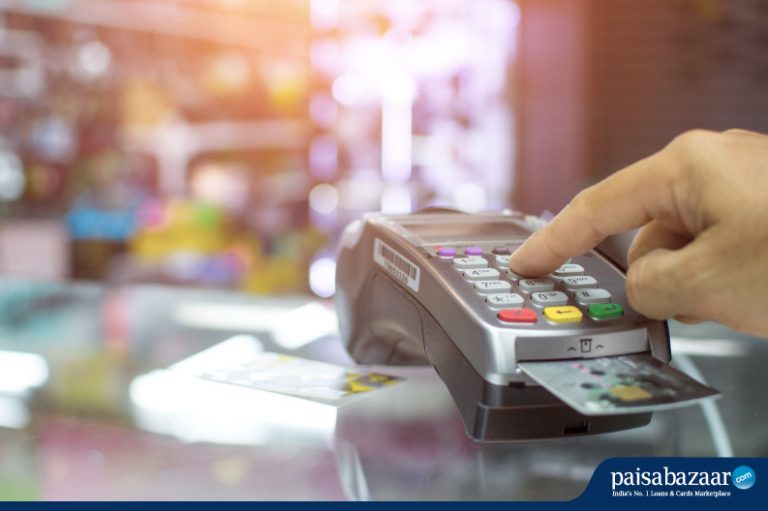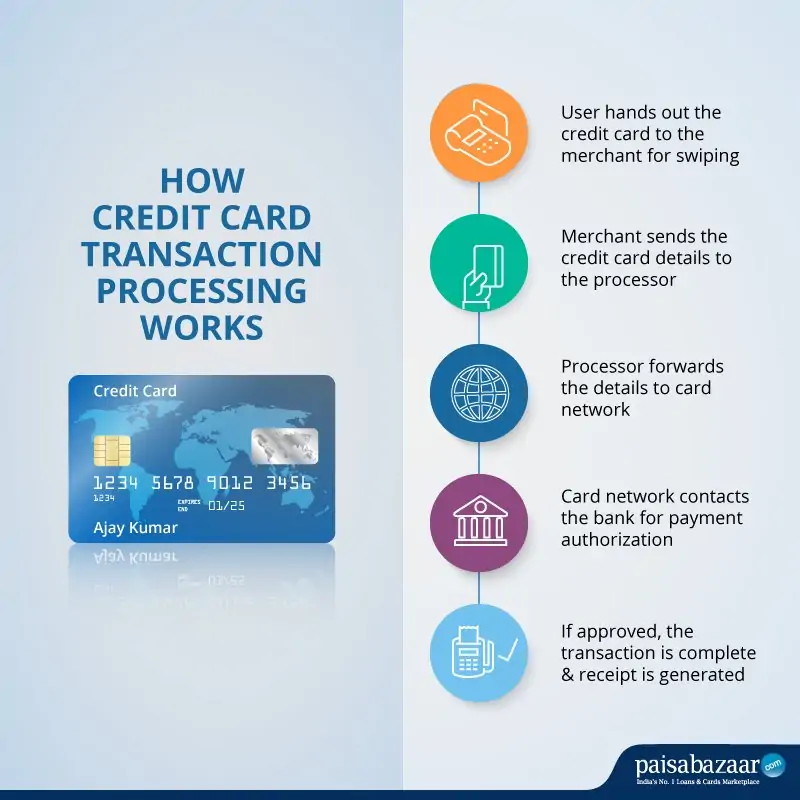

When you use your credit card for shopping at a store, you just have to swipe the card and the transaction is complete within seconds. But have you ever wondered what goes on behind the scenes for processing this transaction? Swiping the credit card in a Point of Sale (POS) machine is only the first step; it is followed by a rather complex procedure that involves multiple parties. First, let us talk about the participants of a credit card transaction.
Understanding the Key Players
Following parties are involved in processing the entire transaction when you use your credit card or debit card at a merchant terminal or at an online payment gateway.
- Cardholder- As the name suggests this is the owner of the card and, in this situation, a buyer. If it is a debit card, it will be linked to the user’s savings account or current account whereas in case of a credit card, the amount will be deducted from the user’s available credit limit.
- Merchant- This is the seller of goods or services and is ready to accept payment using credit card or debit card. The POS machine is linked to the merchant’s account.
- Issuing Bank- This is the card user’s bank. It is the bank that has issued the credit card involved in this transaction. The bank has the final authority to approve or reject the transaction based on the balance available in the account or the credit limit or other factors.
- Merchant’s Bank- This is the bank that manages the merchant’s account. It receives the authorization request for receiving payment and forwards the same to the issuing bank.
- Processor- Also known as service provider, a processor is responsible for collecting information and routing the payment information to the card network.
- Card Network- Your credit card may belong to any of the four major networks- MasterCard, Visa, Discover or American Express. It is the card network that sends payment authorization request to the issuing bank from the acquiring (merchant) bank.
How Credit Card Processing Works
The payment process begins with the cardholder either by swiping/dipping the card in the Point of Sale (POS) terminal or by entering the payment information in a payment gateway. The merchant then accepts this information in one of the two ways- card present (at a store using POS) or card not present (through an online payment gateway).
Next, the credit card processor collects this payment information and routes it to the next stages for authentication. Card processor acts as a communication link between the different parties involved in the transaction. From here, the information goes to the card network.
The card network is responsible for securely passing on the payment request to the issuing bank. The bank then validates the card details with the related account to find out if there’s enough balance or credit limit. The approval or rejection of the transaction is also up to the issuing bank. It sends the appropriate response through the same channel- card network and processor. After this, the message will be shown to the merchant as directed by the issuing bank. If approved, the transaction is complete. However, this does not mean the merchant has received the amount. An amount is deducted from the user’s account but the actual clearing happens after some time or maybe after a few days depending on the card network. Visa and MasterCard have a comparatively faster clearing mechanism than Discover and American Express.

Why is Payment Declined?
There may be several reasons why your payment is declined. In such cases, the POS machine would show the error code which will help the merchant determine the reason of rejection. In case the machine does not show any code, you would have to call the customer care of your bank to find out why your payment was declined.
Some common reasons for payment decline include-
- Insufficient account balance
- Insufficient credit limit on credit card
- Incorrect card number or expiration date (in case of online payment)
- Technical issues
- When the transaction does not fall within the bank’s purview
- When the bank suspects fraudulent activity
Also Read: Unauthorized Transactions on Credit Card: What Should You Do?
Credit Card Processing Fees and Charges
Sometimes, you may have faced a situation wherein the merchant does not want to take a credit card for payment. This is because merchants are required to pay an interchange fee for accepting credit card payments. Some other charges may also be involved. Let us discuss these costs in some detail-
- Interchange Fee- Merchants have to pay a minimal fraction of their sale as fee. This fee is shared by the bank and the card network. Usually, the card networks like Visa and MasterCard have a fixed amount per purchase whereas banks get a portion of the sale. Though this amount is minimal with respect to a single transaction, the total fee on multiple transactions can total up to a significant amount. Interchange fee can vary on the basis of card network, payment type (offline or online), merchant’s business type, etc.
- Branded Card Usage Fee- When you have a branded credit card and use it at the collaborated merchant store, the merchant is required to pay an amount over and above the interchange fee. This is known as assessment fee and varies on the basis of card type, merchant’s business type and several other factors. Since branded cards are offered after deliberate collaboration between the bank and the merchant brand, fee amount is decided beforehand and there is no scope for negotiation later.
- Markup Fee- In order to facilitate the credit card transaction, the bank and processor have to bear certain costs and to cover those costs plus a marginal profit, markup fee is charged. It can vary on the basis of the processor and the pricing model that they adopt.
Suggested Read: Best Co-branded Credit Cards in India
Out of the total processing fee, interchange fee usually accounts for 3-5% and markup fee accounts for 25-30%. Assessment fee, if applicable, can make up to 75% of the card processing cost to the merchant. In addition to this, customers have the right to dispute payment in case of fraudulent transactions or other such circumstances. When such complaint is received by the issuing bank, they charge a penalty from the merchant for the same. And, if found guilty of such fraud, merchants have to pay the amount to the bank.
2 Comments
1) Is it safe to share front side image of credit card via whattsapp.
2) what are the risks in paying using credit card
It is advised not to share your credit card image on Whatsapp.
Credit card is quite a secured payment method as long as you do not share your card details with anyone.